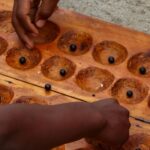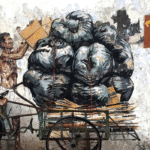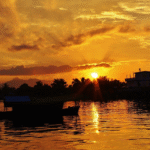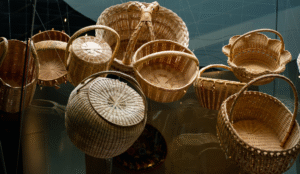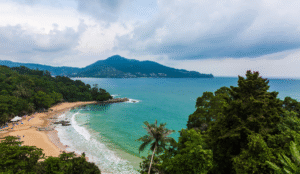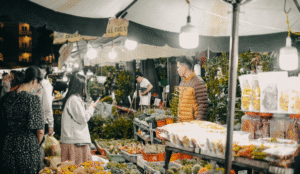The History of Malacca: From Colonial Past to Cultural Powerhouse
Melaka also known as Malacca is more than just a city—it’s a living museum, a storyteller, and a reminder of how cultural fusion can shape identity. Nestled along the southwestern coast of Peninsular Malaysia, Melaka is one of Southeast Asia’s oldest trading ports. For centuries, it was a crossroads for merchants, missionaries, and monarchs, and today, it remains one of Malaysia’s most captivating destinations. Visitors often stroll its historic streets unaware that they’re tracing the footprints of empires.
This article takes you on a deep journey into the history of Melaka—from its humble beginnings as a fishing village to its rise as a colonial prize and its present status as a cultural beacon. Whether you’re a traveler, historian, or curious local, exploring the past of Melaka offers more than just facts—it offers understanding.
Frequently Asked Questions (FAQ)
1. What is the cultural diversity in Melaka?
Melaka is one of the most culturally diverse states in Malaysia, shaped by centuries of global trade and colonial influence. You’ll find a rich mix of Malay, Chinese, Indian, Baba Nyonya (Peranakan), Portuguese, and Dutch heritage all living side by side. This diversity is reflected in the city’s architecture, food, festivals, and religious sites—making Melaka a true cultural melting pot.
2. What is the culture of Malacca?
The culture of Malacca is a blend of tradition and history, influenced by its Malay roots and centuries of foreign contact. From the colorful Peranakan (Baba Nyonya) culture, which mixes Chinese and Malay customs, to colonial Portuguese and Dutch legacies, Melaka offers a unique cultural experience. Traditional arts, antique trades, spicy cuisine, and heritage festivals like San Pedro and Chinese New Year are all part of its living culture.
3. What is unique about Malacca?
What makes Melaka unique is its historic charm and multicultural identity. The entire old town is a UNESCO World Heritage Site, known for its red Dutch buildings, ancient mosques, colonial churches, and traditional shophouses. The city’s famous Jonker Street, unique fusion cuisine like Nyonya food, and riverfront scenery make it a destination unlike anywhere else in Malaysia.
4. What is the symbol of Melaka?
One of the most recognized symbols of Melaka is the A Famosa fortress, a Portuguese-built structure from the 1500s that represents the city’s colonial past. Another important symbol is the Melaka Sultanate, often represented by traditional Malay architecture and historical emblems. On a modern level, the red Stadthuys building and the Melaka tree (where the city supposedly got its name) are also key symbols.
5. What is modern day Malacca?
Modern-day Malacca is a vibrant blend of heritage and development. While it proudly preserves its historic streets, temples, and colonial buildings, it also features modern shopping malls, hotels, and waterfront developments. It’s a popular tourist city with a strong focus on cultural tourism, offering everything from river cruises and museums to trendy cafes and art galleries—all while honoring its storied past.
The Founding of Malacca: A Strategic Jewel
The story of Malacca begins in the late 14th century with the arrival of a Sumatran prince named Parameswara. After fleeing political turmoil in his homeland, Parameswara settled in a small fishing village by the mouth of the Melaka River. Legend has it that he saw a mouse deer kicking one of his hunting dogs into the river—an omen of strength—and decided to name the place after the Melaka tree he was resting under.
Recognizing its strategic location along the maritime trade route connecting China and India, Parameswara established a port. It didn’t take long for traders from across Asia to take notice. Melaka rapidly evolved into a thriving entrepôt, bustling with Chinese, Arab, Indian, and Malay merchants.
The Sultanate Era: Golden Age of Malay Power
By the early 15th century, Malacca had blossomed into a powerful Malay sultanate. Under Sultan Mansur Shah, it expanded its political influence over large parts of the Malay Peninsula and parts of Sumatra. The Sultanate formalized laws, developed administrative systems, and even became a center for Islamic scholarship.
The sultans offered protection and privileges to foreign merchants, and in return, the traders enriched Melaka’s economy and culture. Islam spread through trade and diplomacy, gradually replacing Hindu and Buddhist influences in the region.
Melaka’s court became an epicenter of classical Malay culture, producing literary gems like the Hikayat Hang Tuah, a tale of loyalty and heroism that remains deeply rooted in Malaysian identity.
The Portuguese Invasion: A Turning Point
In 1511, Malacca’s golden age came to a halt. The Portuguese, under the leadership of Afonso de Albuquerque, invaded and captured the city. They recognized Melaka’s value in controlling the vital Strait of Melaka—a gateway for spice trade between the East and West.
The Portuguese built massive fortresses, most notably A Famosa, one of the oldest surviving European architectural remains in Asia. They introduced Catholicism, intermarried with locals, and brought European goods and technologies. However, their rule also brought resistance. The Malay sultans and neighboring kingdoms never ceased attempting to reclaim the city.
Despite its commercial significance, Portuguese Melaka never regained the glory it once had under the Sultanate.
The Dutch Period: Commerce and Compromise
In 1641, the Dutch East India Company (VOC), allied with the Sultanate of Johor, seized Malacca from the Portuguese after a long siege. The Dutch were more interested in maintaining their regional dominance than developing the city. They diverted trade to their hub in Batavia (modern-day Jakarta), leading to a decline in Melaka’s economic importance.
However, the Dutch left an enduring architectural legacy. They built churches, administrative buildings, and homes in the Dutch colonial style. Today, structures like the Stadthuys and Christ Church are among the most photographed in the city.
Rather than forcefully imposing their culture, the Dutch allowed Melaka’s local communities—Malay, Chinese, Indian, and Eurasian—to preserve their identities, which laid the groundwork for its multicultural future.
The British Era: Infrastructure and Integration
Malacca came under British control in 1824, after the Anglo-Dutch Treaty formalized the exchange of territories in Southeast Asia. The British prioritized Penang and Singapore as the region’s trade hubs, and Melaka remained a quieter administrative center.
Still, the British brought significant changes. They improved infrastructure, modernized the legal system, and integrated Melaka into the larger Straits Settlements. English education was introduced, and new waves of Indian and Chinese immigrants arrived to work in agriculture, construction, and trade.
The city’s social fabric became even more layered. Melaka’s Peranakan (Straits Chinese) and Chetti (Indian Muslim) communities flourished, preserving unique customs, attire, and cuisine that blended East and West.
Japanese Occupation and Post-War Struggles
During World War II, Melaka—like much of Malaya—fell under Japanese occupation from 1942 to 1945. This dark chapter in the city’s history brought fear, scarcity, and hardship. The Japanese military regime imposed strict control, and many civilians suffered under forced labor and repression.
After Japan’s defeat, the British resumed control but faced growing anti-colonial sentiment. The movement for Malayan independence gained strength, with Melaka contributing to nationalist causes. Local leaders pushed for self-governance, and by 1957, Malaysia (then Malaya) gained independence.
Cultural Revival in Modern Times
Following independence, Malacca underwent a period of renewal. By the late 20th century, it began to position itself not just as a historic site, but as a cultural destination. In 2008, Melaka, along with George Town in Penang, was recognized as a UNESCO World Heritage Site for its “historic cities of the Straits of Malacca.”
This designation marked a turning point. Restoration efforts blossomed. Ancient shophouses, temples, churches, and mosques were preserved. Museums like the Baba & Nyonya Heritage Museum and the Melaka Sultanate Palace Museum became popular with tourists.
Cultural festivals celebrating Melaka’s multi-ethnic roots—like Chinese New Year, Deepavali, Hari Raya, and the Portuguese Intrudu festival—flourished. The once sleepy town now attracts millions of visitors annually, eager to taste its unique food, walk its cobblestone streets, and feel its timeless charm.
The Legacy of Diversity
One of Malacca’s most extraordinary features is its diversity. Few cities in Asia boast such a deep, organic mix of cultures living side by side for centuries.
You’ll find a mosque next to a Hindu temple, which stands beside a Chinese clan house. Melaka’s architecture reflects this too—from the red-brick Dutch buildings to the ornate Peranakan mansions and British colonial schools.
This blending has produced a cultural richness evident in the city’s art, language, music, and especially its food. Dishes like asam pedas, nyonya laksa, and chicken rice balls are uniquely Melakan, born of a long culinary evolution.
Malacca as a Cultural Powerhouse Today
Today, Malacca is far more than a historic city frozen in time. It’s a thriving cultural powerhouse, a symbol of how past and present can coexist beautifully.
Modern Melaka is home to universities, creative industries, art galleries, and a burgeoning café and boutique scene. Local entrepreneurs are turning heritage buildings into hotels and shops that celebrate the city’s story while catering to modern tastes.
Youth-led initiatives in art, sustainability, and storytelling are giving Melaka a new voice. Street murals, literature festivals, and cultural performances are redefining the way both locals and visitors experience the city.
The Global Importance of Malacca’s Story
Malacca’s journey mirrors that of many port cities shaped by colonialism and trade. But few places have preserved their heritage with such dignity and depth. Understanding the history of Melaka Malaysia offers valuable insights into global history—how power shifted, how cultures clashed and coexisted, and how resilience shaped identity.
It also reminds us of the importance of heritage preservation in a rapidly modernizing world. As cities rush to build skyscrapers, Melaka proves that looking backward can be just as valuable as moving forward.
Visiting Malacca: A Living History Lesson
For travelers, a visit to Malacca is not just a getaway—it’s an education. Walking down Jonker Street, you might find yourself admiring Dutch-era windows, smelling Chinese herbal teas, and hearing the call to prayer—all within a few meters.
Don’t miss:
- A Famosa Fort: The crumbling yet proud remains of Portuguese power.
- Stadthuys: Once the Dutch governor’s residence, now a museum.
- Baba & Nyonya Heritage Museum: A window into Peranakan life.
- Melaka River Cruise: A gentle journey through centuries of trade.
- Local eateries: Where history is served on a plate.
Melaka isn’t just about seeing the past. It’s about experiencing it in motion.
Malacca’s Influence on Modern Malaysia
To truly appreciate modern Malaysia, one must understand the significant role Malacca has played in shaping the nation’s identity. While Kuala Lumpur may be the bustling political and economic capital, Melaka remains the soul—a place where the country’s complex history is remembered, preserved, and honored.
Many of the values embedded in the Malaysian constitution—religious tolerance, multiculturalism, and unity—can trace their roots back to Melaka’s centuries-old tradition of coexistence. Here, the daily lives of Malays, Chinese, Indians, Eurasians, and indigenous communities overlap in a uniquely Malaysian rhythm. In this city, diversity is not a challenge to be overcome; it is a heritage to be celebrated.
This influence also extends to education. Schools across the country teach about The history of Melaka Malaysia to emphasize the country’s evolution from colonial rule to sovereignty. History textbooks explore Melaka not simply as a chapter but as the beginning of a national narrative. For young Malaysians, Melaka isn’t just an old city—it’s a symbol of the strength and complexity of their roots.
Beyond the classroom, many Malaysians visit Melaka for school trips, family holidays, or religious pilgrimages. The city has become a shared memory across generations. Grandparents recall the simpler days of quiet streets and trishaws, while children discover it through food trails and museum visits. It connects people not just to history but to each other.
Cultural Education Through Tourism
In an era where tourism can often dilute culture, Malacca offers a counter-example. Rather than turning its past into a caricature for commercial gain, the city has carefully curated its historical assets in a way that educates as much as it entertains.
Tourists are encouraged to learn—not just see. Interactive museums, heritage walks, and guided tours led by passionate locals offer deeper insights into colonial architecture, Peranakan culture, and traditional craftsmanship. Visitors leave not just with selfies but with stories—about the Portuguese blacksmith who married a Malay woman, the Chinese merchant who helped build a mosque, or the Indian spice trader whose descendants still run the same shop on Heeren Street.
Moreover, Melaka’s role in the global history of trade and colonization makes it relevant to an international audience. Visitors from Europe and Asia often find a piece of their own heritage reflected in this small Malaysian city. The Dutch see familiar gables; the Portuguese hear echoes of language; the Chinese recognize ancestral trade routes. Melaka has become a global classroom without borders.
Future-Proofing the Past
Despite its success, Malacca faces challenges. Climate change threatens its coastal structures. Over-tourism risks turning its heritage quarters into theme parks. And unchecked development can put pressure on its fragile architectural treasures.
But Melaka has shown resilience before, and there is optimism that it will continue to adapt without losing its essence. Local NGOs and government initiatives are working to ensure sustainable tourism practices. Young Melakans are returning home, opening eco-conscious hostels, restoring ancestral homes, and starting businesses rooted in tradition.
The digital age has also offered new ways to preserve and promote Melaka’s legacy. Augmented reality apps allow visitors to see how historical sites once looked. Virtual exhibits and online archives make Melaka’s history accessible worldwide. Through innovation, the city is writing a new chapter—one that’s just as vital as its ancient past.
Why Malacca Matters More Than Ever
In a rapidly globalizing world where cities are starting to look increasingly alike, Malacca stands out by remaining authentically itself. Its winding alleys, spice-scented air, and riverfront cafes are not just picturesque—they’re part of a lived, breathing history.
Melaka teaches us that culture is not static; it evolves, absorbs, and reemerges. The city’s transformation from a fishing village to a sultanate, from colonial possession to cultural icon, shows that identity can be shaped by outside forces and still remain uniquely local.
It’s not just a city of the past—it’s a city with a purpose. As debates about heritage, identity, and globalization intensify, Melaka offers a grounded perspective. It reminds us that the preservation of history is not about freezing time, but about passing wisdom forward.
Whether you’re a visitor wandering down Jonker Street or a student reading about the Spice Route, Melaka leaves an impression. It is not only a point on a map—it is a living narrative that continues to define what it means to be Malaysian, Southeast Asian, and human.
Final Thoughts
Malacca’s story is one of resilience, reinvention, and richness. What began as a humble fishing village became a center of empire, a battleground of colonial powers, and finally, a proud symbol of Malaysia’s multicultural identity.
Through centuries of conflict, change, and growth, Melaka has emerged not as a relic but as a dynamic force—proof that a deep respect for history can shape a vibrant present. It welcomes everyone not just to observe, but to feel its pulse, taste its flavors, and understand its journey.
Whether you’re walking through its old quarters, chatting with locals, or enjoying a night market by the river, Melaka quietly teaches you a lesson: that the most powerful cities are not always the biggest or richest, but those with the deepest roots and the strongest sense of self.
